How to Master the Art of Using an Impact Wrench: Expert Tips!
When it’s time to tackle tough jobs such as changing tires or assembling heavy machinery, an impact wrench can be a game-changer. This handheld power tool delivers high torque with minimal exertion, making it an indispensable tool in automotive repair, construction, and other industries.
Whether you’re a professional or a diy enthusiast, understanding how to use an impact wrench safely and effectively can help you streamline your work and achieve optimal results. In this guide, we will outline the step-by-step process of using an impact wrench, along with some essential tips and precautions to keep in mind. So, let’s dive in and learn how to make the most of this versatile tool.

Understanding The Basics
Using an impact wrench can make your life so much easier, whether you’re a professional mechanic or a diy enthusiast. However, it’s important to understand the basics of how to use this powerful tool to ensure safety and efficiency. In this section, we’ll explore the importance of using the right impact wrench for the job, the different types of impact wrenches and their applications, as well as the key components and features that make these tools so versatile.
Importance Of Using The Right Impact Wrench For The Job
Choosing the right impact wrench for your specific task is crucial for achieving optimal results. Here are the key points to keep in mind:
- Power: Impact wrenches come in various power levels, ranging from cordless models to pneumatic ones. Consider the intensity of the task and choose an impact wrench with an appropriate power source.
- Torque: Different jobs require different amounts of torque. Ensure that the impact wrench you choose offers enough torque to handle your specific needs.
- Compatibility: Some impact wrenches are designed for specific applications, such as automotive or construction work. Make sure to select one that is compatible with the task at hand to maximize efficiency and effectiveness.
- Control: The right impact wrench will provide you with proper control over speed and direction, allowing for precise and accurate results.
- Safety: Using the correct impact wrench for the job not only improves efficiency but also reduces the risk of accidents and injuries.
Different Types Of Impact Wrenches And Their Applications
Impact wrenches come in various types, each suited for specific tasks. Here’s a brief overview:
- Cordless impact wrenches: These portable tools run on batteries, offering convenience and versatility. They are ideal for tasks that require mobility, such as working on vehicles or in tight spaces.
- Pneumatic impact wrenches: Powered by compressed air, pneumatic impact wrenches are commonly used in professional settings like automotive repair shops. They provide exceptional power and durability.
- Electric impact wrenches: These tools are powered by electricity and are often more affordable than other types. They are suitable for a wide range of tasks and are commonly used by diyers.
- Hydraulic impact wrenches: Designed for heavy-duty applications, hydraulic impact wrenches are typically used in industrial settings. They offer immense power and are capable of tackling the toughest jobs.
Key Components And Features Of An Impact Wrench
To make the most of your impact wrench, it’s essential to understand its key components and features. Here are the important points to note:
- Anvil: The anvil is the square-drive socket holder that connects the impact wrench to the socket. It transfers the torque from the tool to the fastener.
- Torque adjustment: Some impact wrenches allow you to adjust the torque settings, giving you greater control over the amount of force applied.
- Forward/reverse switch: This switch enables you to easily change the direction of rotation, allowing for both tightening and loosening of fasteners.
- Trigger: The trigger is the main control for operating the impact wrench. Squeezing it starts the rotation and impact action.
- Ergonomics: Look for an impact wrench with a comfortable grip and a design that reduces fatigue during extended use.
- Led lights: Many modern impact wrenches feature built-in led lights, illuminating dark work areas and enhancing visibility.
By understanding the importance of using the right impact wrench, the different types available, and the key components and features, you can confidently tackle projects while maximizing efficiency and achieving professional results. So, let’s dive deeper into each aspect and discover the intricacies of using an impact wrench to its full potential.
Proper Technique And Handling
Impact wrenches are powerful tools that can make your life easier when it comes to loosening or tightening bolts and screws. However, using them correctly requires proper technique and handling to ensure safety and efficiency. In this section, we will discuss the key factors when it comes to using an impact wrench effectively.
Proper Grip And Body Positioning For Maximum Control:
- Hold the impact wrench with a firm grip, ensuring that your hand is positioned comfortably on the handle. This will give you better control over the tool during operation.
- Maintain a balanced stance with your feet shoulder-width apart. This will provide stability and prevent any unnecessary strain on your body.
- Position yourself in such a way that the impact wrench is aligned with the fastener. This will ensure that the tool’s power is transferred directly to the bolt or screw, allowing for a more efficient operation.
- Keep your body relaxed, but be mindful of your posture. Avoid leaning too heavily on the tool, as it can affect your control and accuracy.
Understanding Torque Settings And Adjusting For Different Tasks:
- Familiarize yourself with the torque settings of your impact wrench. Different tasks require different levels of torque, and selecting the appropriate setting is crucial for achieving the desired result without causing damage.
- Adjust the torque settings based on the size and type of fastener you are working with. Smaller fasteners generally require lower torque settings, while larger ones may need higher settings.
- It’s important to strike a balance between applying enough force to achieve proper fastening and avoiding over-tightening, which can lead to stripped threads or even structural damage.
- Always consult the user manual or manufacturer guidelines to determine the optimal torque setting for the specific task at hand.
Tips For Preventing Over-Tightening Or Under-Tightening:
- Practice using short bursts of power rather than continuous pressure to prevent over-tightening. This technique allows you to have better control over the force applied to the fastener.
- If you’re unsure about the appropriate torque setting, start with a lower setting and gradually increase until the desired tightness is achieved. This will help prevent under-tightening while minimizing the risk of damaging the fastener or the surrounding materials.
- Consider using a torque wrench to ensure precise and accurate tightening, especially when working on critical applications where exact torque specifications are required.
- Regularly inspect your fasteners to ensure they are properly tightened. If you notice any loosening or signs of damage, take immediate action to prevent further issues.
Using an impact wrench with proper technique and handling is essential for efficient and safe operation. By following these guidelines, you can maximize the performance of your impact wrench while ensuring that your fasteners are securely tightened without any unwanted consequences.
So, let’s dive in and put your impact wrench to good use!
Essential Safety Precautions
Using an impact wrench can make your diy projects and automotive repairs a breeze. This powerful tool makes loosening and tightening bolts a quick and effortless task. However, it’s important to remember that safety should always be a top priority when using any power tool.
To ensure your well-being while using an impact wrench, there are several essential safety precautions to keep in mind. Let’s explore these precautions in detail below:
Wearing Appropriate Safety Gear, Such As Goggles And Gloves:
- Wear safety goggles to protect your eyes from flying debris or any potential hazards.
- Use gloves to provide a firm grip on the impact wrench while also protecting your hands from any injuries.
- Consider using ear protection to reduce the noise level generated by the impact wrench, especially if you’ll be working in a noisy environment for an extended period.
Maintaining A Clean And Organized Workspace:
- Clear the area of any clutter or obstacles before you start using the impact wrench to avoid tripping or causing accidents.
- Keep the workspace organized by storing tools and loose items properly to prevent them from getting in the way or causing any injuries.
Ensuring Proper Electrical And Air Supply Connections:
- If you’re using an electric impact wrench, always check the power cord for any frays or damage before plugging it in.
- Make sure the electrical outlet is properly grounded to prevent electrical shocks or accidents.
- For air-powered impact wrenches, ensure the air supply hose is securely connected and free of leaks before operating the tool.
By following these essential safety precautions, you can significantly reduce the risk of accidents or injuries while using an impact wrench. Always prioritize safety and take the necessary steps to protect yourself and those around you. Now that you’re familiar with the key safety measures, you’re ready to confidently use an impact wrench for your next project.
Stay safe and enjoy the convenience and efficiency this tool brings to your diy endeavors.
Common Mistakes To Avoid
Impact wrenches are powerful tools that can make our lives much easier when it comes to tackling stubborn bolts and nuts. However, using an impact wrench incorrectly can lead to a range of issues, from damaging the tool itself to causing safety hazards.
To ensure smooth operation and preserve the lifespan of your impact wrench, there are some common mistakes you need to avoid. We will discuss three key mistakes that many people make when using impact wrenches.
Overloading The Impact Wrench With Excessive Force:
- Applying excessive force or torque on an impact wrench can put unnecessary strain on the tool’s motor and components.
- Overloading the wrench can result in decreased performance, overheating, and even premature wear and tear.
- It is important to understand the maximum torque capacity of your impact wrench and apply appropriate force accordingly.
- Always refer to the manufacturer’s guidelines and adjust the torque setting for different jobs to avoid overloading the impact wrench.
Failure To Properly Maintain And Clean The Impact Wrench:
- Regular maintenance and cleaning are crucial for keeping your impact wrench in optimal working condition.
- Neglecting proper maintenance can lead to decreased performance and increased wear and tear over time.
- Make sure to lubricate the impact wrench regularly, following the manufacturer’s recommendations.
- Clean the tool after each use and inspect it for any loose or damaged parts.
- Proper maintenance and cleaning will not only extend the life of your impact wrench but also ensure safe and effective operation.
Using The Wrong Size Or Type Of Socket:
- Choosing the wrong socket size or type can have a significant impact on the performance and safety of your impact wrench.
- Using an undersized socket can result in slipping off bolts or nuts, causing damage to both the fastener and the tool.
- On the other hand, using an oversized socket can put excessive stress on the wrench’s components, leading to premature failure.
- Always use the correct size and type of socket that matches the fastener you are working with.
- Ensure a proper fit between the socket and the fastener to avoid any potential damage.
By avoiding these common mistakes, you can ensure the effective and safe use of your impact wrench. Taking the time to understand its limitations, performing regular maintenance, and using the correct sockets will help you get the most out of your tool while keeping it running smoothly for years to come.
Now that you know what mistakes to avoid, it’s time to put your impact wrench to good use and tackle those stubborn bolts with ease.
Tips For Using An Impact Wrench On Different Applications
Whether you’re a seasoned professional or a diy enthusiast, an impact wrench is a valuable tool to have in your arsenal. This powerful tool can make light work of heavy-duty jobs, saving you time and energy. However, using an impact wrench requires some knowledge and finesse to ensure optimal performance and prevent damage to your workpieces.
In this section, we will discuss some essential tips for using an impact wrench on different applications.
Removing Lug Nuts On Cars And Trucks:
- Always start by ensuring that your impact wrench is equipped with the correct socket size for the lug nuts you are working on.
- Securely position the socket onto the lug nut and make sure it is engaged properly before activating the wrench.
- Apply steady pressure while operating the impact wrench, allowing it to gradually break loose the lug nut. Avoid excessive force, as this may damage the lug nut or the surrounding components.
- Remember to work in a crisscross pattern when removing lug nuts, loosening them in an alternating sequence to ensure even pressure distribution.
Fastening Bolts In Construction Projects:
- Before fastening bolts, ensure that you have selected the appropriate socket size for the bolt head.
- Properly position the socket onto the bolt head, making sure it is securely engaged.
- Apply steady pressure on the trigger to fasten the bolt, being cautious not to overtighten it. Over-torquing can lead to thread stripping or bolt failure.
- If you have multiple bolts to fasten, create a systematic approach, working from one end to the other or in a specific order to maintain consistency and accuracy.
Loosening Stubborn Screws In Home Repairs:
- It is best to use impact wrenches with adjustable speed settings for loosening screws. Start with a lower setting and gradually increase if necessary.
- Ensure the socket size matches the screw head before attempting to loosen it.
- Place the socket securely onto the screw head, ensuring proper alignment.
- Activate the impact wrench in short bursts, allowing the tool’s torque to break the screw loose. Avoid prolonged or excessive pressure, which can damage the screw head or surrounding material.
- If encountering a particularly stubborn screw, applying penetrating oil before attempting to remove it can help to loosen it.
Using an impact wrench on various applications requires proper technique and understanding. By following these tips, you can ensure safe and efficient use of an impact wrench, whether you’re removing lug nuts on vehicles, fastening bolts in construction projects, or loosening stubborn screws in home repairs.
Troubleshooting And Maintenance
Keeping your impact wrench in top condition is essential for ensuring its optimal performance. Regular maintenance and troubleshooting can help you identify and resolve common issues that may arise while using your impact wrench. In this section, we will discuss how to recognize common issues, steps for regular maintenance and cleaning, and when to seek professional help for repairs.
Recognizing Common Issues With An Impact Wrench
When using an impact wrench, it’s important to be aware of potential problems that may affect its functionality. Here are some common issues to look out for:
- Loss of power: If you notice a decrease in the power output of your impact wrench, it could be due to a variety of factors such as worn-out brushes, a faulty motor, or insufficient air pressure. Check these components and make necessary adjustments or replacements.
- Overheating: Continuous use of an impact wrench can lead to overheating, resulting in reduced performance and potential damage. Keep an eye on the temperature of your tool and let it cool down if necessary. Avoid excessive use without breaks to prevent overheating.
- Leaks: If you notice air or lubricant leaks from your impact wrench, it may indicate a problem with the seals or fittings. Inspect the connections and seals for any signs of damage or wear and replace them if needed.
- Stuck or seized mechanism: Sometimes, the mechanism inside the impact wrench can get stuck or seized due to debris or lack of lubrication. Regular cleaning and lubrication can help prevent this issue.
Steps For Regular Maintenance And Cleaning
Proper maintenance and cleaning of your impact wrench can extend its lifespan and ensure optimal performance. Here are some steps you can follow:
- Regularly inspect the tool for any signs of damage or wear. Check the power cord or air hose, trigger mechanism, and handle for any cracks or loose connections.
- Clean the impact wrench after each use to remove any debris, dirt, or dust that may have accumulated. Use a soft brush or cloth to wipe off the exterior and compressed air to blow out any debris from the mechanism.
- Lubricate the impact wrench regularly according to the manufacturer’s recommendations. Apply a few drops of lubricating oil to the designated points to keep the internal parts moving smoothly.
- Store the impact wrench in a clean and dry place, away from moisture and extreme temperatures. Use a storage case or bag to protect it from dust and potential damage.
When To Seek Professional Help For Repairs
While regular maintenance can prevent many issues, there may be times when professional assistance is necessary. Here are some situations when you should consider seeking professional help:
- Persistent or recurring problems that you are unable to resolve through troubleshooting or maintenance.
- Major damage to the impact wrench caused by accidents, impacts, or improper use.
- Electrical or mechanical issues that require specialized knowledge and tools to diagnose and repair.
Remember, it’s always better to seek professional help rather than attempting complex repairs yourself, as improper handling can further damage the tool or pose safety risks.
Recommended Accessories And Tools
An impact wrench can be a handy tool, offering power and efficiency when it comes to fastening and loosening stubborn bolts and nuts. But to make the most out of your impact wrench, it’s important to have the right accessories and tools on hand.
In this section, we’ll explore some recommended accessories that can enhance the performance and versatility of your impact wrench.
Impact Sockets For Increased Durability
- Impact sockets are specifically designed to handle the high torque generated by an impact wrench. They are built to withstand the force and vibrations produced, ensuring increased durability compared to regular sockets.
- These sockets are made from hardened steel, making them less prone to cracking or breaking under heavy load. They also feature a thicker wall design for added strength and longevity.
- Impact sockets come in various sizes and are available in both standard and metric measurements. It’s important to choose the right size socket to ensure a proper fit on the fastener you’re working with.
Extension Bars For Accessing Hard-To-Reach Areas
- Extension bars are invaluable accessories when you need to reach bolts or nuts in tight or confined spaces. They provide an extended reach, allowing you to access those hard-to-reach areas with ease.
- These bars are available in different lengths, so you can choose the one that suits your specific needs. Whether you’re working on an engine, a construction project, or any other task that requires an impact wrench, extension bars can be a game-changer.
- It’s essential to ensure that the extension bar you select is strong and sturdy, capable of handling the torque generated by the impact wrench. Look for bars made from high-quality materials like chrome vanadium steel for maximum durability.
Air Compressors For Pneumatic Impact Wrenches
- Pneumatic impact wrenches, also known as air impact wrenches, are powered by compressed air. To use these types of impact wrenches, you’ll need an air compressor to supply the necessary air pressure.
- Air compressors come in various sizes and capacities, so it’s important to choose one that matches the requirements of your impact wrench. Consider factors such as the air consumption rate, tank capacity, and horsepower when selecting an air compressor.
- It’s advisable to invest in a high-quality air compressor to ensure reliable performance and longevity. Look for compressors that are portable, easy to maintain, and capable of providing consistent air pressure.
Remember, having the right accessories and tools can significantly enhance your experience with an impact wrench. Make sure to invest in impact sockets, extension bars, and an air compressor that are well-suited to the tasks you’ll be tackling.
Frequently Asked Questions On How To Use An Impact Wrench?
How Does An Impact Wrench Work?
An impact wrench uses a rotating mass to generate high-torque output quickly. It applies sudden, intense force to loosen or tighten fasteners, allowing you to effortlessly remove or secure them.
Can Impact Wrenches Be Used For Different Tasks Or Applications?
Absolutely! Impact wrenches are versatile tools that can be used in various applications, including automotive repairs, construction projects, and even household tasks. From changing tires to assembling furniture, an impact wrench provides fast and efficient results.
Do I Need Special Training To Use An Impact Wrench?
While formal training is not mandatory, it is recommended to familiarize yourself with the tool’s safety precautions and operation. Understanding how to select appropriate sockets and adjust torque settings will ensure safe and effective use of an impact wrench.
Is It Necessary To Wear Protective Gear While Using An Impact Wrench?
Yes, wearing appropriate safety gear is crucial when using an impact wrench. Safety glasses, gloves, and ear protection can help prevent eye injuries, hand injuries, and hearing damage. Always prioritize your safety and take necessary precautions while operating any power tool.
Can I Use An Impact Wrench For Delicate Tasks?
While impact wrenches are powerful tools, they may not be suitable for delicate tasks that require precision, such as small electronics or fragile materials. In such cases, it is advisable to use manual tools or low-torque electric screwdrivers to avoid causing damage.
Conclusion
Using an impact wrench can greatly simplify your work and save you time and effort. By following the proper techniques, you can effectively use this powerful tool to tighten or loosen fasteners with ease. Always remember to start with the right size socket and adjust the torque settings accordingly.
Take your time to position the impact wrench properly and avoid excessive force that may lead to stripped or damaged bolts. It’s important to wear appropriate safety gear and work in a well-ventilated area. Regular maintenance, such as lubricating the impact wrench and inspecting it for any damage, will ensure its optimal performance and longevity.
By mastering the art of using an impact wrench, you’ll be able to tackle various projects with confidence and efficiency. So, grab your impact wrench, put these tips into practice, and enjoy the smooth and hassle-free execution of your tasks!

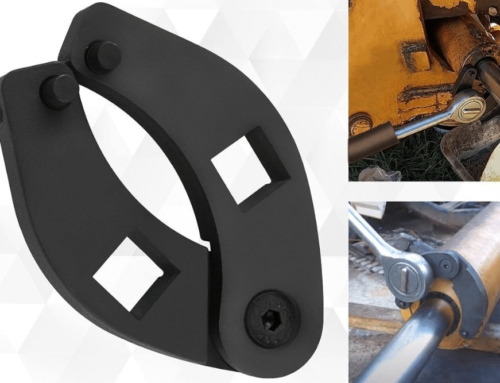
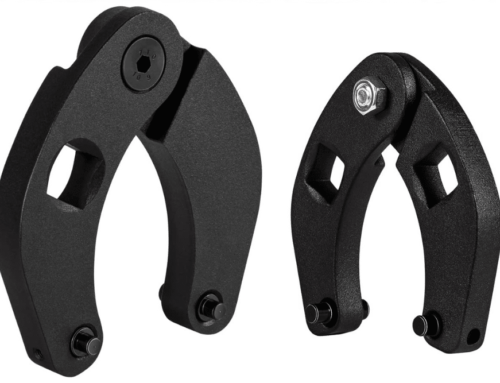
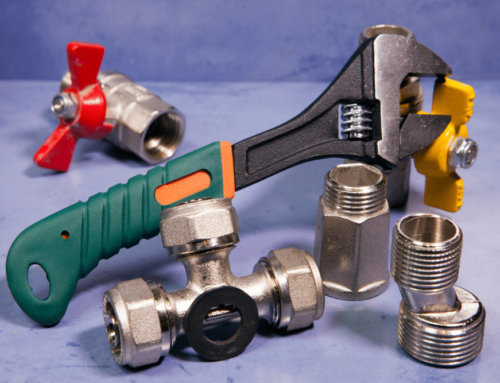
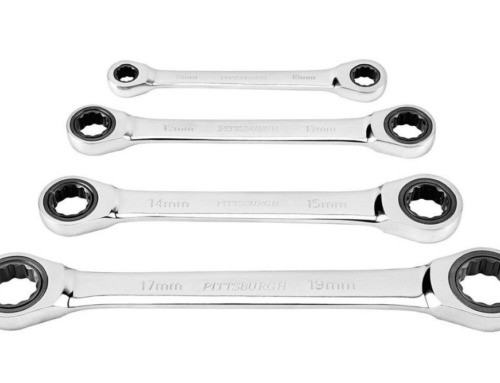
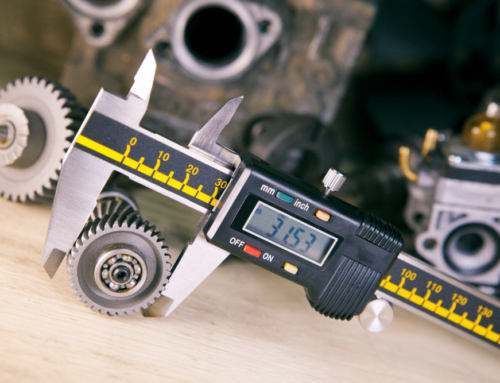
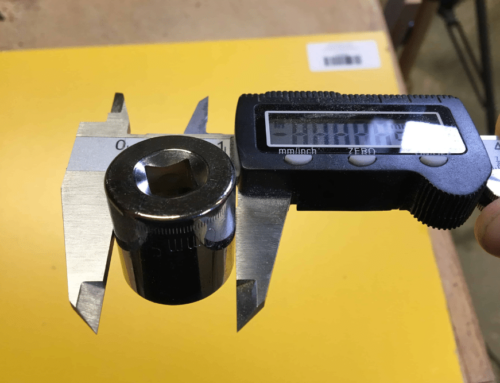
Leave A Comment